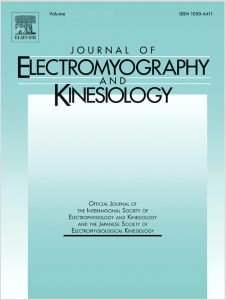Publications

Soleus muscle and Achilles tendon compressive stiffness is related to knee and ankle positioning
Authors: Carlos Cruz-Montecinos 1, 2, Manuela Besomi 3, 4, Nicolas Acevedo-Valenzuela 1, Kevin Cares-Marambio 1, Alejandro Bustamante 1, Benjamin Guzman-Gonzalez 1, Claudio Tapia-Malebran 1, Rodolfo Sanzana-Cuche 5, 6, Joaquin Calatayud 7, Guillermo Mendez-Rebolledo 8
Affiliations:
- Department of Physical Therapy, Laboratory of Clinical Biomechanics, Faculty of Medicine, University of Chile, Santiago, Chile
- Division of Research, Devolvement and Innovation in Kinesiology, Kinesiology Unit, San Jose Hospital, Northern Metropolitan Health Service, Santiago, Chile
- Carrera de Kinesiologia, Facultad de Medicina Clinica Alemana, Universidad del Desarrollo, Chile
- School of Health and Rehabilitation Sciences, The University of Queensland, Brisbane, Queensland, Australia
- Department of Anatomy and Legal Medicine Faculty of Medicine, University of Chile, Chile
- Facultad de Medicina y Ciencia, Universidad San Sebastian, Sede Los Leones, Chile
- Exercise Intervention for Health Research Group (EXINH-RG), Department of Physiotherapy, University of Valencia, Spain
- Escuela de Kinesiologia, Facultad de Salud, Universidad Santo Tomas, Chile
Journal: Journal of Electromyography and Kinesiology - October 2022, Volume 66, Article no. 102698 (DOI: 10.1016/j.jelekin.2022.102698)
-
Field & Applications:
- Medical
- Musculoskeletal health
Changes in fascicle length and tension of the soleus (SOL) muscle have been observed in humans using B-mode ultrasound to examine the knee from different angles. An alternative technique of assessing muscle and tendon stiffness is myometry, which is non-invasive, accessible, and easy to use. This study aimed to estimate the compressive stiffness of the distal SOL and Achilles tendon (AT) using myometry in various knee and ankle joint positions.
Twenty-six healthy young males were recruited. The MyotonPRO device was used to measure the compressive stiffness of the distal SOL and AT in the dominant leg. The knee was measured in two positions (90° of flexion and 0° of flexion) and the ankle joint in three positions (10° of dorsiflexion, neutral position, and 30° of plantar flexion) in random order. A three-way repeated-measures ANOVA test was performed.
Significant interactions were found for structure × ankle position, structure × knee position, and structure × ankle position × knee position (p < 0.05). The AT and SOL showed significant increases in compressive stiffness with knee extension over knee flexion for all tested ankle positions (p < 0.05). Changes in stiffness relating to knee positioning were larger in the SOL than in the AT (p < 0.05).
These results indicate that knee extension increases the compressive stiffness of the distal SOL and AT under various ankle joint positions, with a greater degree of change observed for the SOL.This study highlights the relevance of knee position in passive stiffness of the SOL and AT.
Keywords: myometer, myofascial force transmission, soleus, musculoskeletal, leg muscles
These results indicate that knee extension increases the compressive stiffness of the distal SOL and AT under various ankle joint positions, with a greater degree of change observed for the SOL. This study highlights the relevance of knee position in passive stiffness of the SOL and AT.


